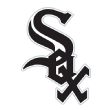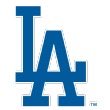Identifying post-hype prospects -- players with a minor league pedigree who've failed in limited major league time -- remains one of the best ways to find fantasy baseball sleepers.
To compile my list, I established three steps:
1. Exclude players who still sit on prospect lists (Alex Reyes) or who've had at least one breakout season (Byron Buxton).
2. Include names who appeared on Keith Law's Top 100 preseason prospect rankings from 2014 to 2018, focusing on the spring before their respective call-ups.
3. Identify names ranked 200th or worse on Tristan Cockcroft's Top 300 rankings for 2019 -- as of the Feb. 8 update. (No Amed Rosario, Rafael Devers or Jesse Winker, who already have plenty of hype for 2019.)
Pay up

Tyler Glasnow, SP, Rays (age 25 as of June 1)
No. 6 on Keith Law's Top 100 Prospects (2016)
With high-90s velocity, Glasnow (6-foot-8) sat down minor leaguers (2.30 ERA across three levels in 2015), but he stumbled to a 5.86 ERA and 57 walks in 85.3 IP with the Pirates.
He quietly made gains, though, after his trade to Tampa Bay last summer: Beneath his 4.20 ERA hid much better command (10.3 K/9, 3.1 BB/9). He's refining his delivery with guidance from 6-foot-7 pitching coach Kyle Snyder.
Glasnow probably won't top 170 IP and might struggle with allowing homers, but he qualifies as a reliever in ESPN leagues and has the foundation to turn into a top-20 fantasy starter.

Austin Meadows, OF, Rays (23)
No. 9 (2017)
Meadows joined Glasnow in that Pittsburgh trade and hit .344/.396/.771 at Triple-A Durham, making a great first impression. He then went on to post a six-homer, five-steal, .287/.325/.461 MLB debut, showing a spark in the homer column last year to complement promising plate discipline and contact.
Meadows may yield time against some LHPs, but from the late rounds he can deliver a 20/20 pace.

Steven Matz, SP, Mets (27)
No. 37 (2016)
During a season with a career-high 30 starts and 154 innings, the oft-injured southpaw bumped his K%-BB% from 11.8 up to 18.6 in the second half last year, and he refined his routine between pitches to streamline his delivery.
With his mid-90s sinker, Matz boasted one of MLB's top 10 ground ball rates (48.8) and could be the latest Mets starter to break out.

Jorge Soler, OF, Royals (27)
No. 14 (2015)
The Cubs shipped the Cuban to Kansas City in 2017, when he suffered an oblique injury, spent much of the year at Triple-A and underwhelmed in limited MLB time.
Last season, however, after losing weight and retooling his swing, Soler was on a career-best pace (.265/.354/.466, nine homers in 257 PAs) before a fractured toe ended his season in mid-June.
Assuming he's ready for Opening Day, the 6-foot-4, 215-pound masher should enjoy sustained playing time for the rebuilding Royals and still has 30-homer upside.

Dylan Bundy, SP, Orioles (26)
No. 26 (2015)
The right-hander probably has a rockier road than Matz to a breakout, but as Tristan noted in his Kings of Command breakout report, Bundy's strikeout potential alone deserves attention.
Go for it

Carlos Rodon, SP, White Sox (26)
No. 12 (2015)
Following recovery from shoulder surgery, Rodon resurfaced looking like an ace, rolling out a 2.70 ERA across his first 14 starts. Unfortunately, he struck out just 71 and walked 36 in that time and eventually crashed with a 9.22 September ERA.
In this up-and-down season, Rodon's 6.7 K/9 was his lowest in any of his four seasons. Perhaps now that he's had a healthy offseason, the left-hander could improve there, and as long as you don't need to trot him out for each start, you can stash him.
He won't be able to rely on contact as much as he did in 2018, but a few tweaks to his approach around the strike zone could help him take a huge step toward his formerly attractive high-K ceiling.

Manuel Margot, OF, Padres (24)
No. 25 (2016)
Margot should keep his place in San Diego's starting outfield -- or start elsewhere if traded -- thanks to his defense, and for all his flaws, he cut down his strikeout rate by 3 percent last season. He would've left the yard more often had he not popped up at nearly double the rate of 2017 (17.2 infield fly ball percentage, up from 9.4).
He should bounce back to double-digit homers and could swipe 20 bags with a full season.

Max Kepler, OF, Twins (26)
No. 33 (2016)
Kepler's jarring increase in fly balls undermined his batting-average positives. That might be a sign that he's finally trying to get on the page of fixing his launch angle, though ... something he resisted in the past.
As arguably one of the best defensive outfielders in baseball, Kepler should have a long leash to find his footing at the plate.

Dansby Swanson, SS, Braves (25)
No. 2 (2017)
The highest-ranked former prospect on this list, Swanson has failed to live up to much of that billing at the plate: .243/.314/.369 in his first two-plus seasons, a correction of his torrid .302/.361/.442 38-game run in his 2016 debut.
Swanson doesn't yet stand out in any single category, but last year's 14-homer, 10-steal output says that as long as he's active -- and showcasing his suddenly elite defense -- he should churn out a useful line.
He's still recovering from wrist surgery to fix an injury that might've occurred as early as last April, and he may not see many meaningful tune-up at-bats until March, so he still could be snared at a steep discount.

Jorge Alfaro, C, Marlins (25)
No. 35 (2015)

Austin Hedges, C, Padres (26)
No. 74 (2015)

Francisco Mejia, C, Padres (23)
No. 7 (2018)
Backstops often develop offensive skills after fantasy investors have lost patience.
Alfaro strikes out often but has untapped power (420-foot average HR distance last year, per Statcast, tied for third). In San Diego, Hedges has power and, probably, the early edge thanks to his underrated pitch framing, but Mejia has the hit tool and would pay off if his defense can stick behind the dish.
2019 factors

Vince Velasquez, SP, Phillies (26)
No. 56 (2016)
Despite a 4.63 ERA, some injuries and questions about his future in the rotation, Velasquez has spun a 9.8 K/9 in the past three years, starting in all but one of his 80 appearances.
Cutting his fly balls and walk rate would help him survive the second and third times through the order (8.74 ERA last year on his third trip through the lineup), but anyone with a three-year K/9 that matches Clayton Kershaw's and ranks in the top 20 among starters remains worth your time.

Julio Urias, SP, Dodgers (22)
No. 5 (2016)
In 2016 at age 19, Urias struck out 84 with a 3.39 ERA in 77 minor league innings, but since then, Urias has totaled just 27.1 innings thanks to shoulder issues. He's recovered from surgery but might hover at Triple-A waiting for an opportunity.
The Dodgers' rotation games might work toward preserving Urias' long-term value this season, which could cap his fantasy ceiling, but now's the perfect time to tuck him away as one of your last mixed-league picks and see if he can exceed that outlook.

Brandon Woodruff, SP, Brewers (26)
No. 93 (2018)
Woodruff posted 10.0 K/9, 2.98 BB/9 and a 53.1 ground ball rate last season. Becoming a full-time starter could hurt that pace, but sign me up for the possibilities.

Orlando Arcia, SS, Brewers (24)
No. 10 (2016)
His 15-homer, 14-steal 2017 looks like a distant memory after his .236/.238/.307 disaster last season, but Arcia's often great defense should allow him plenty of room to rebound. In leagues where late-round playing time is scarce, Arcia could end up performing like a middle-rounder, as Andrelton Simmons did in 2017.

Clint Frazier, OF, Yankees (24)
No. 27 (2016)
If a trade or injury occurs to suddenly hand Frazier a steady role, he could play to a double-digit pace in homers and steals with a promising OBP, thanks to his plate discipline. Now ready for camp after concussion issues slowed him, Frazier might own one of the biggest ceilings on this list -- with a good buy-low window in dynasty leagues.

Lewis Brinson, OF, Marlins (25)
No. 32 (2018)
The former Brewers prospect probably doesn't have the 20-steal upside from his early prospect days, and his horrific plate discipline (4.2 BB%, 29.6 K%) can hurt if you rely on him too strongly in fantasy. Still, he might start for the entire season as Miami tests his future, and when he actually connected last year, he often sent the ball far: Brinson's average homer distance of 414 feet, per Statcast, ranked him tied for 11th among all hitters.

Bradley Zimmer, OF, Indians (26)
No. 21 (2016)
Zimmer (6-foot-5) is recovering from surgery to fix a torn labrum in his right shoulder. A year ago, a chunk of the fantasy community was expecting him to steal 20-plus bags. Even with his questionable plate discipline, we should chase that again -- with a much more expendable roster spot.

Brett Phillips, OF, Royals (25)
No. 76 (2015)
Phillips' contact shortcomings have overshadowed his early power-speed potential in Milwaukee's system, but he's a plus defender for a rebuilding club that should give him an extended audition.

J.P. Crawford, SS, Mariners (24)
No. 10 (2018)
Crawford has posted only a .214/.333/.358 line in 72 MLB games while struggling with swing mechanics. Seattle should let him figure things out in its lineup, and he could reach double digits in homers and steals.

Scott Kingery, 2B, Phillies (25)
No. 33 (2018)
Despite a .226/.267/.338 slash line in his rookie season, Kingery stole 10 bases. Any improvement of his woeful plate work (5.0 BB%, 26.0 K%) will add to that column. Kingery is battling Maikel Franco for the starting 3B job, yet even if he loses it, he still could find himself starting several times per week at various positions.

Ryan McMahon, 2B, Rockies (24)
No. 31 (2018)

Raimel Tapia, OF, Rockies (25)
No. 58 (2017)
McMahon, a 2018 sleeper, has little left to prove at Triple-A (.337/.379/.577 career) and is competing with Garrett Hampson -- the more popular 2019 name -- for the second base job. Tapia stole 21 bases at Triple-A last year and lines up as Colorado's fourth outfielder.
Should more reps open up -- Charlie Blackmon is 32, and Daniel Murphy is 34 -- McMahon and Tapia can charge into extended work with home games at Coors Field.

Amir Garrett, RP, Reds (26)
No. 86 (2016)
The former basketball player ran into trouble as a starter last year but struck out a whopping 10.1 per nine in 66 relief appearances. Could he be a bargain version of Josh Hader?

Sandy Alcantara, SP, Marlins (23)
No. 87 (2018)
His future in the rotation probably hinges on his performance this year, but Miami's pitcher-friendly confines should make him a worthy speculation. He'll have to rein in his control (6.17 career BB/9), though.
Crossroads season

Franklin Barreto, 2B, Athletics (23)
No. 22 (2016)
Oakland's signing of Jurickson Profar blocks any chance of Barreto carving his own path to a starting role in camp. Perhaps another level will come in the next few years, but for 2019 purposes, he looks like more of a fantasy compiler dependent on playing time.

Greg Bird, 1B, Yankees (26)
No. 80 (2015)
Lower-body injuries and a long swing have squashed his momentum, but he still has the ceiling of a homer and OBP machine thanks to his sound walk rate and the Bronx's short porch. With Luke Voit justifiably getting more buzz with his budding skills, Bird still could work as a lotto ticket, but he might need to land with another club to give his career a jolt.

Lucas Giolito, SP, White Sox (24)
No. 13 (2017)
Giolito's career 5.48 ERA has prompted him to try alternative scientific solutions to figure things out on the mound. More important, he's shortening his windup, which could help recapture the stuff that he was lauded for in past years.
Stubbornly holding out hope

AJ Reed, 1B, Astros (26)
No. 44 (2016)
Many dominoes will have to fall, but any 1B or DH work that opens up could let the buzzy pick from 2017 build on the 62 homers he's planted at Triple-A across the past two seasons.
Others to monitor: Jorge Mateo, SS, Athletics; Albert Almora, OF, Cubs; Nick Williams, OF, Phillies; Rodrigo Lopez, SP, White Sox; Colin Moran, 3B, Pirates; Kevin Newman, SS, Pirates; Kyle Zimmer, P, Royals; Dalton Pompey, OF, Blue Jays; Anthony Alford, OF, Blue Jays; Dominic Smith, 1B, Mets; Travis d'Arnaud, C, Mets
